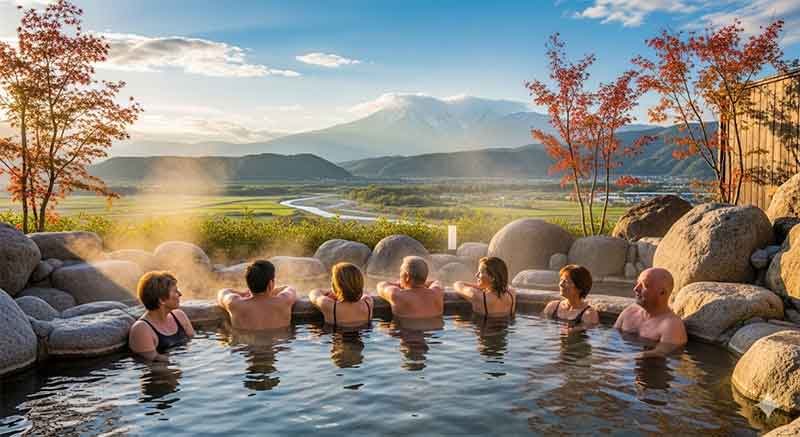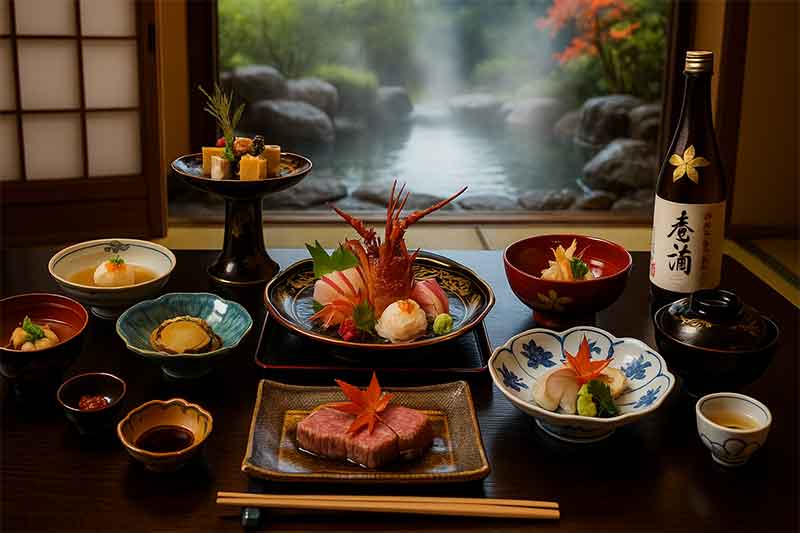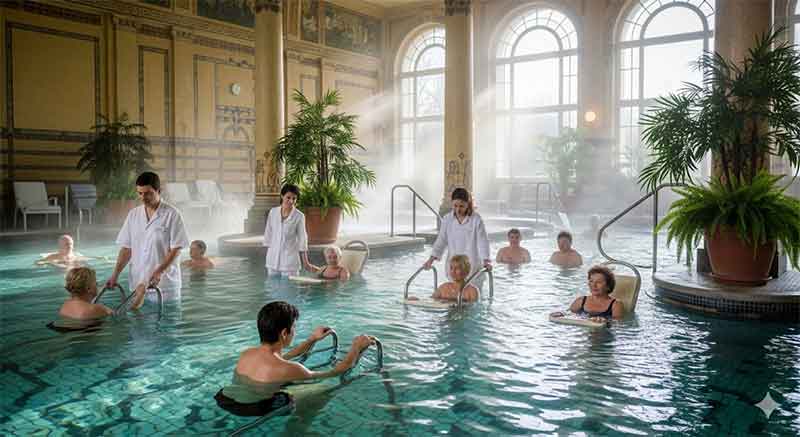Not many countries have a true tradition of soaking in hot water. In warm regions, daily life centers around showers or quick rinses, while the idea of immersing yourself in a bath of hot water is rare. Japan, however, is unique. As a volcanic archipelago, it has one of the world’s highest concentrations of hot springs per square kilometer.

The Japanese relationship with bathing has been shaped by both climate and history. In the colder seasons, soaking in hot water became not only practical but also deeply ingrained in daily life. Over time, this developed into a cultural habit, and the Japanese became a people who pay careful attention to the quality of the water itself—its minerals, its clarity, its source. Historically, hot springs were used for toji (湯治), therapeutic stays where people bathed repeatedly to heal their bodies. Each spring has distinct mineral properties, making them natural gifts of the earth.

This practice of bathing is also culturally rare. While countries such as Germany or Finland developed traditions of sauna—often even mixed-gender bathing—the idea of entering hot water fully naked is unusual on a global scale. Japan stands out as one of the few countries where bathing together in the nude has been normalized, even among strangers.
The tradition was also shaped by the reality of daily life. Until relatively recently, many Japanese homes did not have private baths. Instead, people went to sento (銭湯), public bathhouses. These became not only places for washing, but for relaxation and social connection after a long day’s work. This history explains why bathing in Japan carries such strong cultural meaning: it is cleansing, healing, and at the same time deeply communal.

Yet, in modern Japan, hot springs are not strongly tied to healthcare. After the Meiji Restoration, Japan looked to Western science, and medical progress prioritized clinical trials over traditional practices. Organizations researching the medical value of onsen do exist, but their influence remains limited. Meanwhile, countries such as Germany and France continue to connect hot springs with healthcare—Kur resorts and spa therapy are even covered by public health insurance.
Postwar economic growth also shifted the role of hot springs in Japan. Onsen towns became destinations for corporate retreats and leisure trips, often associated with entertainment and indulgence rather than healing. This led to a boom-and-bust cycle, with abandoned facilities now found across the country.
Onsen – Japan’s Timeless Soul, Born from the Earth
The videos created by Twilight Mode San capture a traditional Japanese way of engaging with hot springs and bring it into the present. These natural springs, born from the earth itself, have long been valued for their healing qualities depending on their mineral composition.
Many of these old inns have been passed down through generations. Over time, the “toji-style” therapeutic inns—where people stayed for long healing retreats—have almost disappeared. Instead, luxury facilities and elaborate meals became the focus, rising and falling along with Japan’s economy. Still, a few of these humble inns have quietly survived, even as they face the challenge of an aging population.
The minerals in these springs can truly be called the “breath of the earth.” To immerse yourself in such waters is to awaken a deep sense of nostalgia rooted in Japanese culture. For foreign visitors, it may be difficult to fully grasp, but in the silence of the bath there is an opportunity to face oneself, to feel a spirituality tied to wabi-sabi—the beauty of impermanence, much like the journey of a human life.
In many ways, this is profoundly Buddhist in spirit. Unlike Christianity, it reflects a uniquely Japanese worldview: to accept the transience of life, to live in harmony with nature, and to find oneself within it.
Through his work, Tasogare Mode introduces this diverse and subtle world of Japanese culture to audiences across the globe.
Shimane prefecture Yugakai Onsen – Nakamura Ryokan
A weakly radioactive sodium chloride–bicarbonate hot spring, classified as hypertonic, neutral, and low-temperature.
Tohoku still embodies the timeless charm of Japan’s simple hospitality.
Mr. Twilight Mode, who has soaked in every onsen across Japan
Still, the potential is enormous. If hot springs were once again linked to health, rehabilitation, and even renewable energy—rather than only tourism—the future of Japan’s rural regions could be very different. And if more people, both Japanese and international visitors, embraced long-term toji stays of a week or more, bathing daily to restore body and spirit, onsen could recover their original role as places of balance and renewal.
For foreign travelers, ryokan and hot springs already represent a world of “extraordinary experience.” If the healing dimension were highlighted more clearly, Japan’s hot spring culture could inspire not only relaxation but also genuine wellness—and perhaps even a model for the future of healthcare and tourism combined.